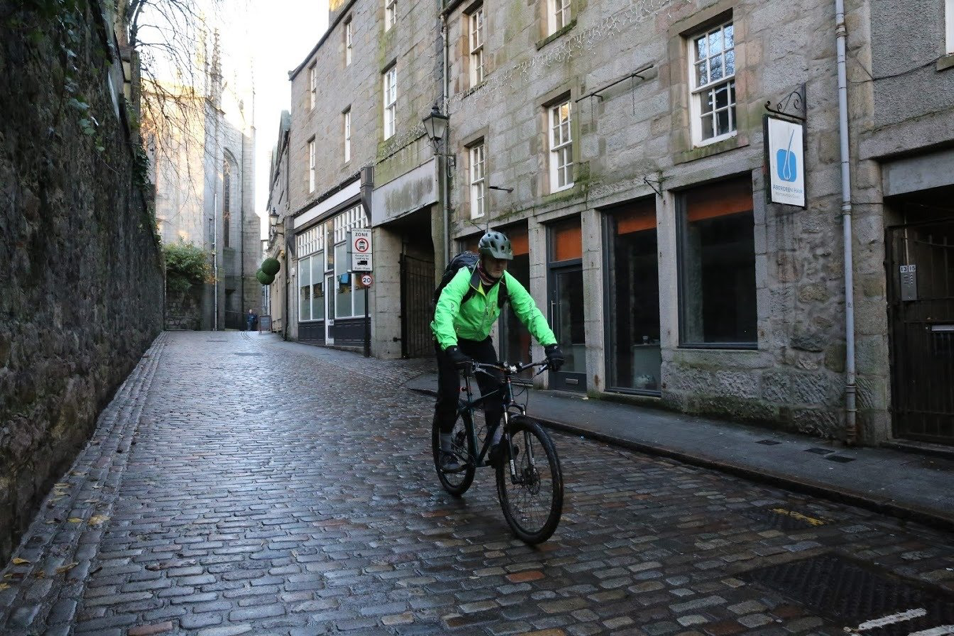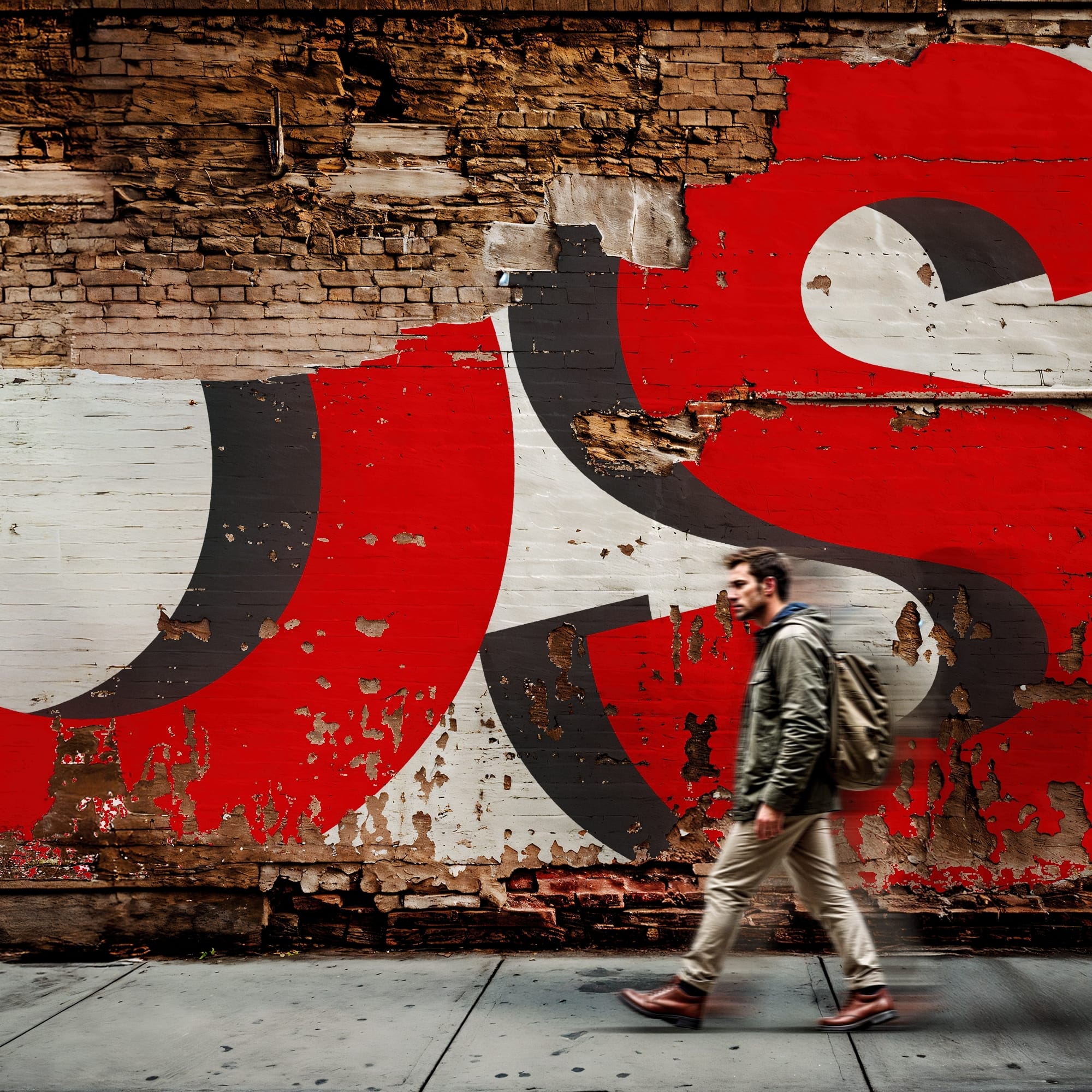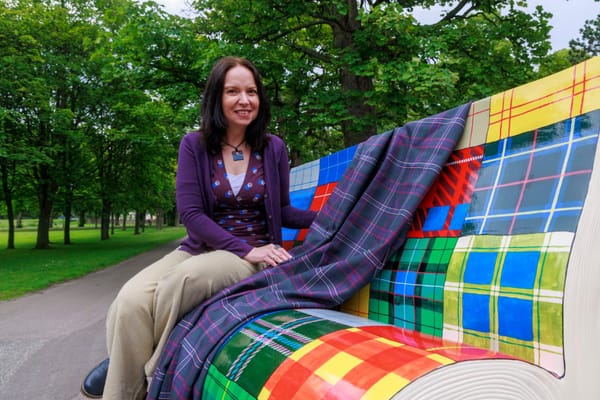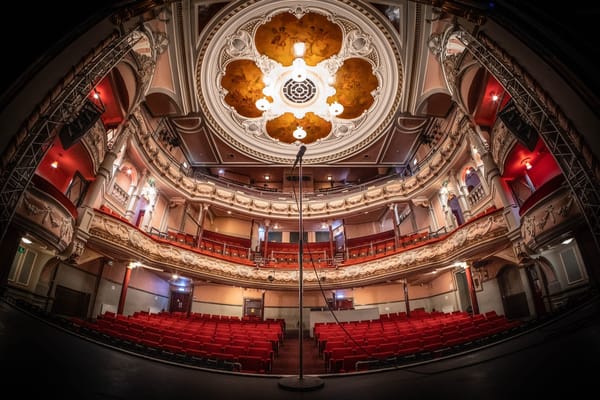The Bumpy Path that Is Aberdeen’s Journey to Becoming a Cycling City
The bumpy path that is Aberdeen’s journey to becoming a Cycling City

Cycle lanes have become a major talking point between Post community members over the past few weeks as city council decisions have caused derision no matter where people stand on cycle space management in Aberdeen. We decided to reach out to Neil Innes, Grampian Cycle Partnership Committee Member and Event Director of Ride the North, to get his views on which direction Aberdeen should be headed
Would you like to see your message here? Let's talk.
POST highlights Aberdeen’s creative scene, from theatre and music to visual arts. We focus on showcasing the city’s unique talent and supporting local voices.
Through stories, artist profiles, and event coverage, we’re here to share what makes Aberdeen vibrant. Sign up for free or support us and go ad-free for just £3 a month.
The Lockdown Spring of 2020 brought a sudden boom in cycling. The public were advised against use of public transport, while at the same time gyms closed, organised sport was suspended and the permitted daily exercise felt like the one escape we all had from the stresses and challenges of the covid crisis.
With roads suddenly as quiet as anyone could remember, bikes that had not seen the light of day for a while were dusted off and with bike shops remaining open as an essential service, demand for new bikes hit an unprecedented high.
Spaces for People
Among the emergency responses to the crisis was the Spaces for People initiative. This initiative was launched by the Scottish Government acknowledging that “Across the world, cities have seen increased rates of cycling and many cities have responded to this by reallocating road space to better enable this shift. Scotland’s towns and cities will now be able to do the same”
Aberdeen’s successful bid for £1.76m gave the city funds to implement measures that could provide safe routes to work for key workers and safe space for socially distanced local exercise. To date, the key piece of cycling infrastructure implemented has been the 2.2 mile cycle lane along the city’s Beach Esplanade. It was opened to cyclists on 5 September. On 28 October (54 days later), Aberdeen City Council agreed that most of it be removed.
Despite that introduction, this article is not actually about the beach cycle lane. I do appreciate it raised concerns, but as someone who used it, also appreciate that it was the first time I’d ever seen a ‘proper’ segregated bike lane in Aberdeen. We do have some shared paths (for walking and cycling) that are good for cycling, but as someone whose ridden my bike in cities across Europe, on cycling infrastructure that is designed to keep cyclists apart from motor traffic and from pedestrians, it felt a defining moment to see that concept implemented in my city.
The Beach Esplanade is a distraction
The truth is that the route along Aberdeen beach was never hugely relevant to the goal of shifting us out of cars and promoting active travel as way to get to work or school. That objective requires bold decisions to allocate space for cycling in areas of the city where there is less room to play with. The Beach Esplanade has no residents, no (fixed) businesses, no ‘ownership’ of parking spaces, no junctions of any real note, no traffic lights and no roundabouts.
It has the widest carriageway, the widest pavement and a vast capacity for parking. The city’s 2015 masterplan sets out a vision of ‘A Cycling City’ and specifically highlights one cycle route that didn’t exist in 2015 — the Beach Esplanade. That the city council are not prepared to defend it and improve it in the face of feedback is a stark statement of where the city is on that transition being seen in cities around the world.
The decisions we make about that way ahead for Aberdeen have to be shaped around what problems it is we are trying to solve — and it’s natural that there are different views on that.
I said this wasn’t about the beach …and it’s not! The decisions we make about that way ahead for Aberdeen have to be shaped around what problems it is we are trying to solve — and it’s natural that there are different views on that. We all see the world differently. The problem(s) I wish to see addressed are the ones that revolve around our population not taking enough exercise, the air we breathe contributing to serious health conditions as well as climate change, traffic jams costing our economy, a culture of fast driving and high fatality rates across our region and the danger of projecting an image of a city that is stuck in the past and not for moving.
There is a consensus in cities around the world…but not here
The disappointing thing is that there did appear to be consensus about these matters and the bolder implementation of cycling measures to play a part in tackling some of these issues. There is a consensus in cities around the world.
Aberdeen has an ongoing struggle to come to terms with the idea that a reversal of the trend of increased car usage and it’s associated role in public health concerns and climate change contributions, will not happen by itself.
In Aberdeen, we’ve had a reminder that we haven’t reached that consensus yet. We do have the strategy documents that say we are part of this movement, but we don’t have movement to say the strategy documents are anything beyond a paper exercise. Aberdeen has an ongoing struggle to come to terms with the idea that a reversal of the trend of increased car usage and it’s associated role in public health concerns and climate change contributions, will not happen by itself. It requires leadership.
Riding a bike is normal
There is no argument presented here that sets up a cyclist v driver conflict. I had a conversation with a local journalist just a few weeks ago and was told that cycling was a ‘divisive’ issue. It’s not — that’s not a satisfactory characterisation. Riding a bike is a normal way for normal people to go about their normal daily business. Or at least that’s the way it is places that do cycling better than we do. I am a driver, a pedestrian and a cyclist. I’m happy to allow others to aim for a different future where we leave motor cars behind altogether, for now I’ll support a move towards greater harmony and respect in the sharing of the space on our streets.
To create space for cycling, there is a self evident requirement to reassign space that currently has a different use. Our local and national plans will all encourage walking, so we aren’t readily taking away space on pavements. The same plans will all talk about reducing road traffic — so the answer has to reconfigure road and on-street parking to make safe space for cycling. This is exactly what every other city is doing, and exactly what Aberdeen has some evident difficulty with.
For many years now Aberdeen has been left behind by Edinburgh and Glasgow, never mind Amsterdam. That’s not always easy for a proud Aberdonian to admit.
It would be quite easy to say that a country like The Netherlands, all of an hour flight away from Aberdeen airport, has a completely different cycling culture to us, with segregated cycle lanes on all main roads. We all know that. For many years now Aberdeen has been left behind by Edinburgh and Glasgow, never mind Amsterdam. That’s not always easy for a proud Aberdonian to admit.
Many cannot admit there is a problem
Commonly applied logic is that the first step in addressing any issue, has to be acknowledgement that there is an issue that needs to be addressed. This, perhaps, is where Aberdeen’s challenges begin. There are lots of great things about our city — overall, it has an excellent quality of life and has enjoyed great prosperity. But nothing stays the same forever.
The environmental agenda has changed perceptions of what a modern city is. Greater mobility of the workforce and skill shortages mean that cities are now in greater competition with one another to attract and retain talented people. Aberdeen knows this and has been at the heart of the talent attraction contest for decades — wages here have been higher than other places for fifty years. As I say, nothing lasts forever — we need to be a sustainable and healthy modern city rather than rely on the same plan for the next fifty years. Cycling, despite the 54 day toe dip, requires a longer term culture change and we do have to think many years ahead.
In March 2018 the city’s Lord Provost is quoted in the local press saying “Aberdeen has one of the highest rates of people cycling of any city in the UK”. It doesn’t — it’s not at the races. We have rightly been proud of the fact that Aberdeen has, for decades, lead the way on so many fronts. We don’t lead the way on the creation of a modern city with active travel, high public transport use, city centre pedestrianisation, moderating the dominance of motor traffic, developing cycling. We are behind the curve on these matters.
While I was invited to write this piece as the voice of a ‘cyclist’, cycling is not my chief concern. Creating a better city is what we all want. I aspire to see more children travelling to school without a lift from parents, thriving shops on Union Street, teenagers who want to stay here and build their lives here — a the direction of travel has been against on these matters for some time. I want to see Aberdeen sustaining the quality of life it has offered and to improve the life chances of its citizens. We don’t achieve much by standing still. If we genuinely want a city with more active travel, we aren’t moving forward fast enough.
A huge thank you to Neil for sharing his views. You can get in touch with Ride the North on Twitter.
There is no easy solution to how things can be improved for cycling in Aberdeen. It will take bold leadership at the council, further funding from the Scottish government, and smart well thought out ideas from citizens and community leaders. We’d also love to hear from YOU. You can find us on Twitter, Facebook, Instagram and LinkedIn.






